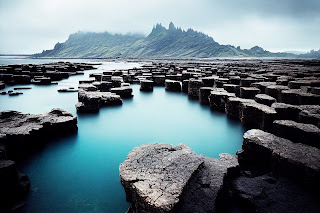The Aqueduct of Segovia is one of the most impressive and iconic ancient engineering marvels that still stand today. This awe-inspiring structure is located in the city of Segovia, which is situated in the autonomous community of Castilla y León in Spain. The aqueduct is a remarkable example of Roman engineering, and it remains one of the most recognizable and best-preserved ancient structures in the world.
The aqueduct stretches for a distance of 818 meters, with a maximum height of 28.5 meters at its highest point. The structure is composed of two tiers of arches, with the lower tier consisting of 118 arches and the upper tier consisting of 44 arches. The arches were constructed in a series of decreasing sizes, with the largest arches located at the base of the structure and the smallest arches located at the top. The aqueduct is an impressive example of Roman engineering, with the arches serving to distribute the weight of the structure evenly and prevent collapse.
The Aqueduct of Segovia is not only impressive in terms of its engineering, but it is also a testament to the skill of the Roman builders who constructed it. The granite blocks used in the construction of the aqueduct were quarried from the nearby Sierra de Guadarrama mountains, and each block was carefully shaped and fitted to ensure a perfect fit. The precision of the construction is evident in the fact that the aqueduct still stands today, despite being subjected to the elements and earthquakes over the centuries.
The aqueduct has been a source of fascination for visitors to Segovia for centuries, and it has played an important role in the history of the city. During the Middle Ages, the aqueduct was used as a fortification, with the upper tier serving as a walkway for soldiers to defend the city against attackers. The structure has also been used as a symbol of the city, appearing on the city's coat of arms and on the Spanish euro coins.
Today, the Aqueduct of Segovia is one of the most popular tourist attractions in Spain, with visitors flocking to Segovia to see this impressive structure. The aqueduct has been well-preserved over the centuries, and it remains a testament to the skill and ingenuity of the ancient Roman builders who constructed it. Visitors to Segovia can take a guided tour of the aqueduct, or they can simply marvel at the structure from a distance and take in the stunning views of the city from its elevated vantage point.
In addition to being an impressive feat of engineering, the Aqueduct of Segovia is also an important cultural and historical landmark. The structure has played a significant role in the history of Segovia, and it remains an important symbol of the city's heritage and identity. The aqueduct has been designated a UNESCO World Heritage site, recognizing its cultural and historical significance and ensuring its preservation for future generations.
In conclusion, the Aqueduct of Segovia is an impressive and iconic structure that continues to capture the imagination of visitors from around the world. This remarkable feat of engineering is a testament to the skill and ingenuity of the ancient Roman builders who constructed it, and it remains an important cultural and historical landmark in the city of Segovia.
.jpg)
.jpg)
.jpg)
.jpg)




.jpg)
.jpg)
.jpg)
.jpg)
.jpg)


